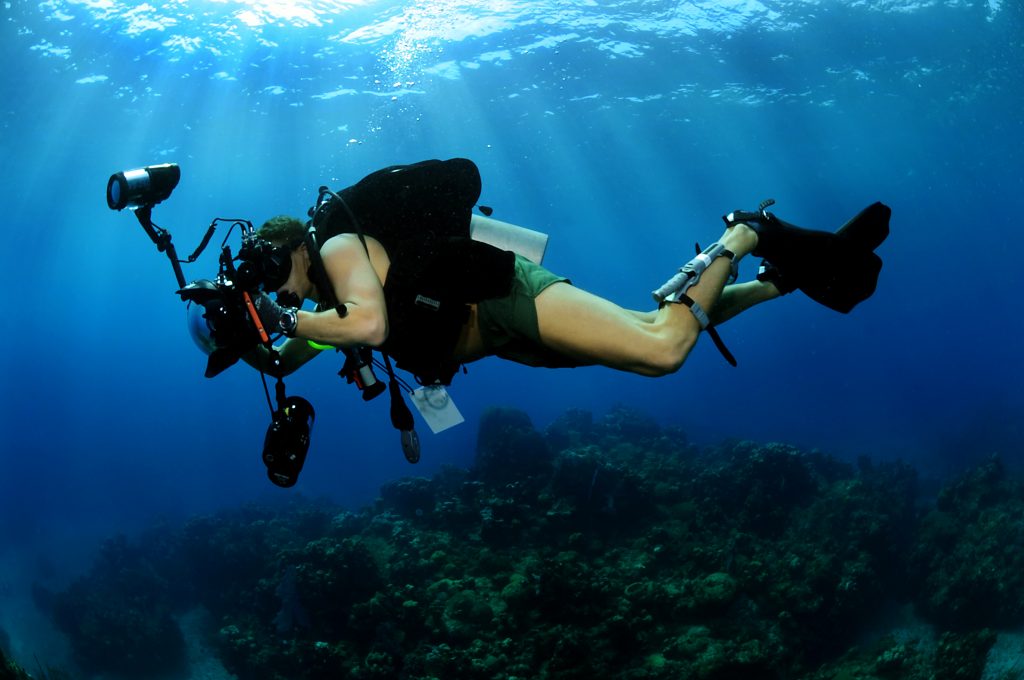No products in the basket.
Blog
The history of bone conduction

Bone conduction allows you to hear sound by means of vibrations of the bones in your face (jaw bones and temporal bones). This means that the sound waves leave your outer and middle ear (where the eardrum is located) and directly stimulate your inner ear (the hearing organ).
Bone conduction technology has been a tool for hearing impaired people for many years. Even Beethoven, who had hearing problems, used bone conduction to listen to music and he had a very particular way doing this by biting the composer’s baton while touching the piano.
There are 4 major industries or domains that currently benefit from bone conduction technology (and we see this number growing rapidly):
Table of Contents
Hearing Impaired Auxiliary
Since 1977, more than 300,000 people with hearing loss or hearing problems have appealed to a bone conduction device that is also known as BAHA (bone anchored hearing Aid). It is just a fact that these headphones are the ideal choice for people who wear hearing aids or devices inside the ear. Indeed, if you’ve never tried it, it’s definitely worth trying to wear a bone conduction headphone while you’re wearing hearing aids. Do you want to know more about the benefits of bone conduction for hearing impaired? Read our article “Bone Conduction for hearing impaired”.
Bone conduction as a means of military communication
The army was one of the first users of the bone reduction technology by introducing bone conduction headphones that were sitting behind the ear in order to allow communication on the battlefield without losing sense of the ambient noise. This was an unseen improvement in the field of communication because the user became aware of his or her ambient noises (the bone conduction headphone namely sits behind the ear and not in the ear) while military instructions could still forwarded. Many tactical units are currently using this technology thanks to companies such as Invisio.
Bone conduction headphones for sports
Bone conduction headphones are becoming increasingly popular within the music industry. What was originally considered to solely be a hearing aid is now used in the music industry for several years as an alternative way to listen to music.
In 2008, Audio Bone came on the market. Audio Bone was the first commercial bone conduction headphone that made its appearance in the sports world. They claimed to be able to deliver the same sound quality as classic headphones while still allowing users to hear the ambient sounds because the ears were left free. Although the same sound quality is still a utopia, the bone conduction technology is gradually becoming more popular within the sporting world, and the headphones can count on a worldwide support of many athletes, cyclists and runners because you can finally listen to music in a safe way.
Bone conduction when scubadiving
The use of bone conduction underwater is a great discovery, there is no other way to describe this feeling. While this technology was patented in 1996, you can see in the video below how the Casio brand was the first to commercialize and truly introduce the technology into the scubadiving world. The device they brought on the market was the Logosease.
This unit is actually an underwater transmitter that uses bone conduction coupled with ultrasonic sound with a range of 32 kHz to allow wireless communication underwater as long as you stay inside the range of vision of your fellow diver.
Sound solution. Even Apple begins to understand the benefits of a headphone which allows the user to remain aware of the ambient noise and therefore the company works day and night to improve voice recognition based on bone conduction.

Wim Styleman is a content writer, translator, reviewer and bone conduction fanatic. Interested in the wonderful world of bone conduction since 2016. Driven by a desire to get everyone submerged into this wonderful technology, but critical and honest when he has to be as a reviewer. Only the best is good enough. He has traveled around the globe and visited various CES events. When he isn’t busy testing bone conduction devices or writing freelance translations, he is at his bike somewhere on the Belgian roads or on his touring skis somewhere in the Austrian or French Alps.

